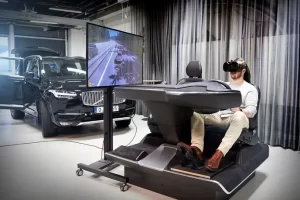The Influence of Technology on Modern Car Design

Car technology has transformed how drivers rely on their vehicles for navigation, entertainment and safety purposes – not to mention making cars more desirable!
Unfortunately, automotive designers can sometimes go too far with their tech innovations, leading to vehicles which may be more costly to repair, more complex for drivers to understand and operate, or may compromise driving safety altogether.
The 1960s
The 1960s were an uncertain decade, marked by sexual revolution, nuclear war, and colonisation of Africa all taking place simultaneously. Additionally, this decade saw Pop Art flourishing and an erosion of cultural distinctions.
Car designers experimented with curves and rounded edges, creating designs that were both more stylish and aerodynamic. Tail fins began appearing, inspired by space travel. Curved chrome trim pieces became signature features on cars. Automatic transmissions were introduced, making driving easier and safer while power steering and brakes became accessible to wider audiences.
The 1970s
Digitized displays gradually replaced analog gauges during this decade, enabling drivers to more accurately monitor the performance of their cars while improving safety in wet or slippery conditions.
Following World War II, designers were inspired to add more vibrantly colored designs – such as orange, blue and green hues while traditional red was still widely utilized – to their vehicles.
Armi’s book examined auto design as an art form, depicting it as an epic struggle for artistic autonomy against corporate culture and engineering forces. Unfortunately, his analysis was incorrect in several key ways and missed its mark entirely.
The 1980s
As automakers shifted toward fuel efficiency, they also started shaping cars to be sleeker and more aerodynamic. While previously designers used physical models such as clay to craft car shapes, by the 1980s computer programs were taking over this task.
These designs resulted in more aerodynamic vehicles; however, this left them looking boxy-looking with few curves. Designers began responding to this trend with more curved exterior designs on luxury cars during the 1990s; digital displays replaced old analog gauges while anti-lock brake systems were introduced as safety features; however some experts are concerned that tech excess might actually harm drivers.
The 1990s
The 1990s witnessed an astounding transformation in car design. Cars suddenly looked less boxy and more curvaceous due to advances in manufacturing technology that enabled faster and cheaper production of aluminum-formed curved shapes.
Aerodynamics became an even greater factor when designing cars, with curves helping to cut through air more effectively and ushering in the modern supercar era.
The 2000s
Car engines received an overhaul and became more fuel-efficient and less polluting during this decade, while “driverless car” technology became available from various manufacturers, making self-driving capabilities possible for vehicle models.
Throughout the 2000s, car designs began trending towards more rounded shapes with soft curves as this was considered safer in collision. Airbags became standard features on all cars during this decade and keyless start systems became an everyday occurrence.
Environmental issues also spurred hybrid vehicle innovation as car makers discovered methods of using both electricity and gas power sources to power vehicles. This proved an immense boost for the industry as it reduced dependence on gasoline for powering the cars as well as their overall environmental footprint.
The 2010s
Cars in the 2010s have evolved to become more aerodynamic and futuristic, featuring sleek lines and cutting-edge lighting technology. Meanwhile, vehicle infotainment systems have also seen improvements, with touchscreen displays becoming more prevalent and voice recognition becoming commonplace.
Cars have developed from hobby vehicles into everyday necessities that can be mass produced, thanks to technological advances. As a result, manufacturers now produce lighter and more fuel-efficient cars than ever before, while at the same time being more safety conscious with features like blind spot monitoring and lane departure warning built into many models. Furthermore, technology allows car manufacturers to produce vehicles more suitable for people of various income levels.









